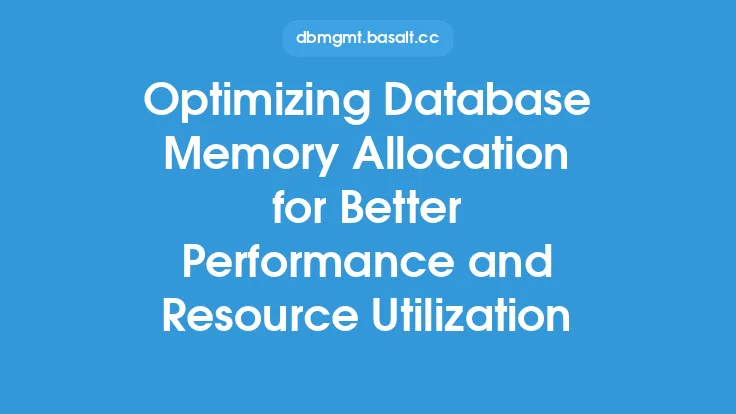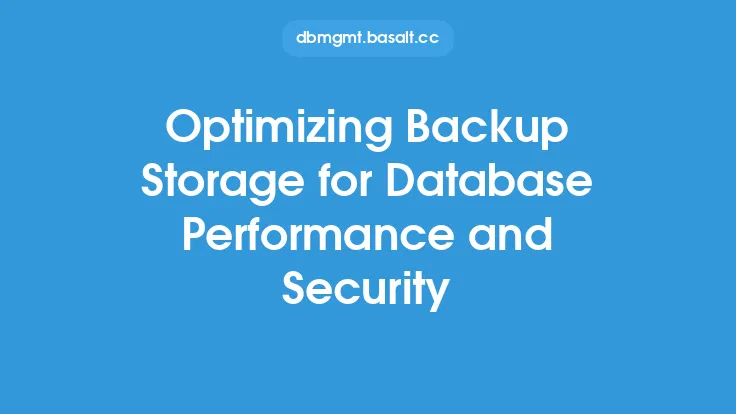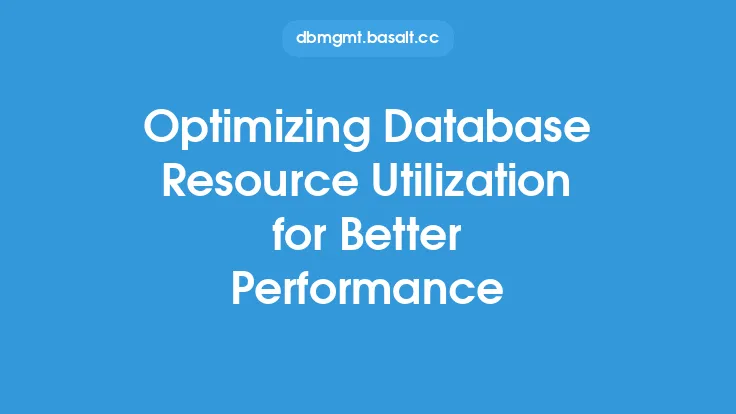When it comes to optimizing database storage, there are several key considerations that can help improve performance and reduce costs. At the heart of any database is the storage system, which is responsible for holding all of the data. This data can range from simple text files to complex multimedia files, and the storage system must be able to handle it all efficiently. One of the primary ways to optimize database storage is by selecting the right type of storage media. There are several options available, including hard disk drives (HDDs), solid-state drives (SSDs), and flash storage. Each of these options has its own strengths and weaknesses, and the choice of which one to use will depend on the specific needs of the database.
Understanding Storage Media Options
HDDs are the traditional choice for database storage, and they offer a number of advantages. They are relatively inexpensive, offer high storage capacities, and are widely supported by most database management systems. However, they also have some significant drawbacks. They are relatively slow, with average seek times of around 5-10 milliseconds, and they can be prone to mechanical failure. SSDs, on the other hand, offer much faster performance, with average seek times of around 0.1-0.2 milliseconds. They are also more reliable than HDDs, with a lower risk of mechanical failure. However, they are more expensive than HDDs, and they offer lower storage capacities. Flash storage is a type of SSD that uses flash memory to store data. It offers extremely high performance, with average seek times of around 0.01-0.1 milliseconds, and it is highly reliable. However, it is also very expensive, and it is typically only used in high-performance databases.
Optimizing Database Configuration
In addition to selecting the right type of storage media, optimizing database configuration is also critical for improving performance and reducing costs. This includes configuring the database to use the optimal amount of memory, configuring the disk layout to minimize disk contention, and configuring the database to use the optimal number of disk spindles. It also includes optimizing the database's query optimization algorithm, which is responsible for determining the most efficient way to execute queries. This can include configuring the algorithm to use the optimal indexing strategy, configuring it to use the optimal join order, and configuring it to use the optimal aggregation strategy. By optimizing the database configuration, it is possible to significantly improve performance and reduce costs.
Using Indexing to Improve Performance
Indexing is another key technique for improving database performance. An index is a data structure that improves the speed of data retrieval operations by providing a quick way to locate specific data. There are several types of indexes, including B-tree indexes, hash indexes, and full-text indexes. Each of these types of indexes has its own strengths and weaknesses, and the choice of which one to use will depend on the specific needs of the database. By creating the optimal indexes on the optimal columns, it is possible to significantly improve the performance of the database. This is because indexes allow the database to quickly locate the data that is needed to answer a query, rather than having to scan the entire table.
Implementing Data Partitioning
Data partitioning is a technique that involves dividing a large table into smaller, more manageable pieces. This can be done based on a variety of criteria, including the value of a specific column, the date that the data was inserted, or the type of data that is being stored. By partitioning the data, it is possible to improve the performance of the database by reducing the amount of data that needs to be scanned to answer a query. It is also possible to improve the availability of the database by allowing different partitions to be backed up and recovered independently. There are several types of data partitioning, including range partitioning, list partitioning, and hash partitioning. Each of these types of partitioning has its own strengths and weaknesses, and the choice of which one to use will depend on the specific needs of the database.
Leveraging Storage Virtualization
Storage virtualization is a technique that involves abstracting the physical storage devices from the logical storage devices. This allows multiple physical storage devices to be presented as a single logical storage device, which can improve the performance and availability of the database. Storage virtualization can be implemented using a variety of techniques, including storage area networks (SANs), network-attached storage (NAS), and virtual storage appliances (VSAs). By leveraging storage virtualization, it is possible to improve the performance of the database by allowing multiple physical storage devices to be used simultaneously. It is also possible to improve the availability of the database by allowing data to be mirrored across multiple physical storage devices.
Monitoring and Analyzing Storage Performance
Finally, monitoring and analyzing storage performance is critical for optimizing database storage. This involves using a variety of tools and techniques to monitor the performance of the storage system, including disk usage, disk latency, and disk throughput. It also involves analyzing the performance data to identify bottlenecks and areas for improvement. By monitoring and analyzing storage performance, it is possible to identify areas where the storage system can be optimized to improve performance and reduce costs. This can include optimizing the disk layout, optimizing the indexing strategy, and optimizing the query optimization algorithm. By continually monitoring and analyzing storage performance, it is possible to ensure that the database is running at optimal levels and that storage costs are minimized.





